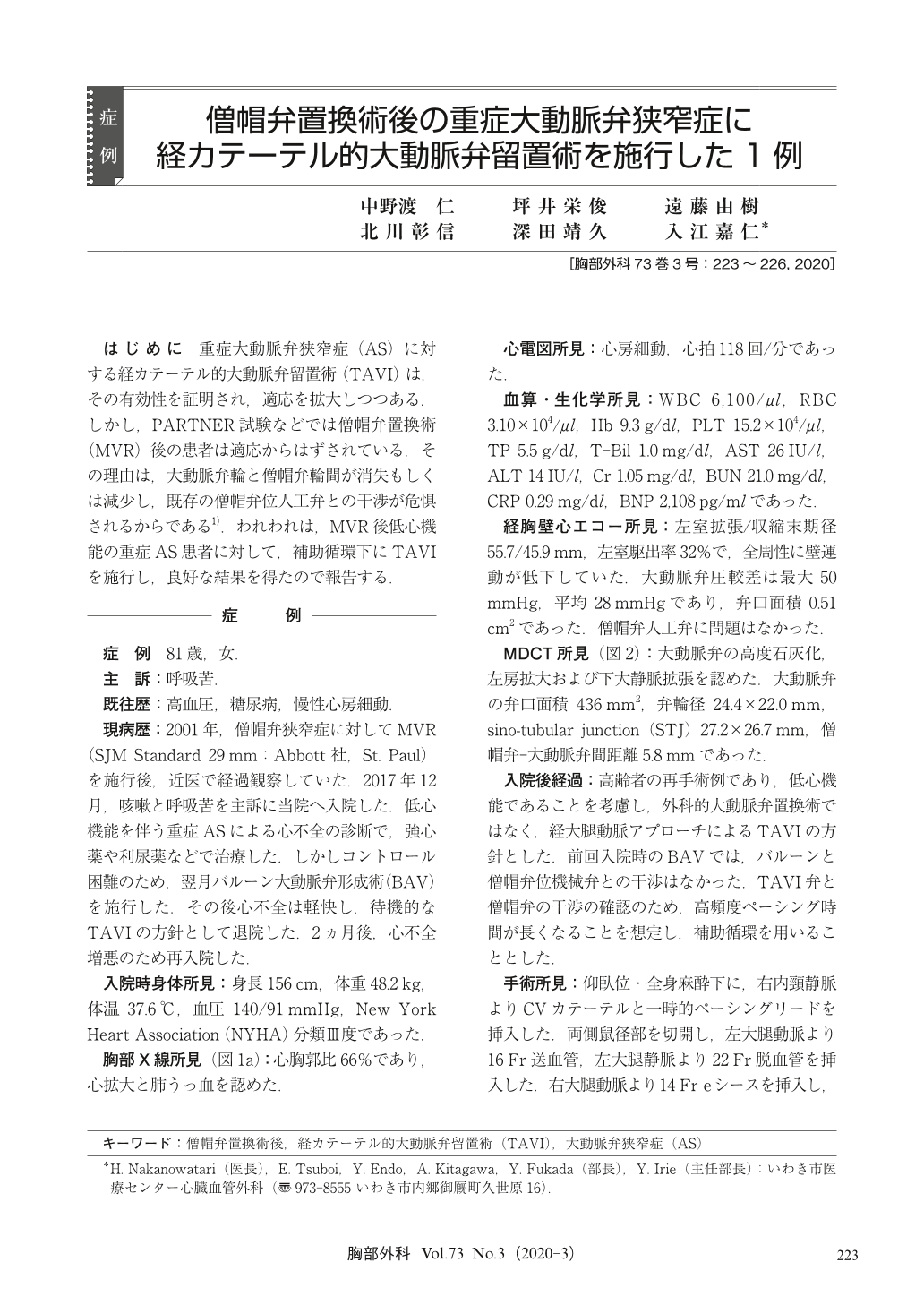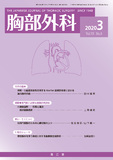Japanese
English
- 有料閲覧
- Abstract 文献概要
- 1ページ目 Look Inside
- 参考文献 Reference
はじめに 重症大動脈弁狭窄症(AS)に対する経カテーテル的大動脈弁留置術(TAVI)は,その有効性を証明され,適応を拡大しつつある.しかし,PARTNER試験などでは僧帽弁置換術(MVR)後の患者は適応からはずされている.その理由は,大動脈弁輪と僧帽弁輪間が消失もしくは減少し,既存の僧帽弁位人工弁との干渉が危惧されるからである1).われわれは,MVR後低心機能の重症AS患者に対して,補助循環下にTAVIを施行し,良好な結果を得たので報告する.
An 81-year-old woman presented with progressive congestive heart failure. Seventeen years before, she had undergone mitral valve replacement with a mechanical prosthesis. Echocardiography revealed severe aortic stenosis with a depressed left ventricular ejection fraction of 32%.At first, rescue balloon aortic valvuloplasty (BAV) was performed. After transient improvement of symptoms, she was readmitted 2 months later with recurrence of severe congestive heart failure. Transcatheter aortic valve implantation (TAVI) with an Edwards Sapien valve was performed. During the procedure, BAV was performed to confirm that the balloon did not interfere the movement of the mechanical valve. Moreover, supported by a veno-arterial extracorporeal membrane oxygenation, we could prevent myocardial ischemia during rapid pacing and slowly deploy the valve in a precise position. TAVI can be safely and successfully performed in patients with a preexisting mechanical mitral prosthesis.

© Nankodo Co., Ltd., 2020


